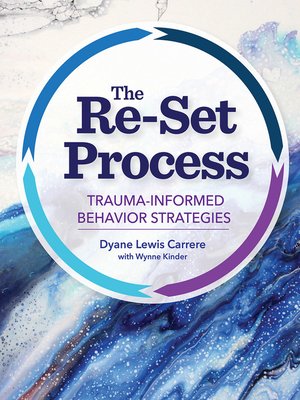
Sign up to save your library
With an OverDrive account, you can save your favorite libraries for at-a-glance information about availability. Find out more about OverDrive accounts.
Find this title in Libby, the library reading app by OverDrive.



Search for a digital library with this title
Title found at these libraries:
| Library Name | Distance |
|---|---|
| Loading... |
When students with histories of trauma struggle with self-regulation and challenging behaviors, traditional interventions often fall short. The educators on your staff need a clear and consistent trauma-informed process to help students re-regulate and return to learning—and that's what they'll find in this reader-friendly guide to the revolutionary Re-Set Process.
Developed by two seasoned educators who specialize in trauma-informed teaching, the Re-Set Process is a neuroscience-based approach to improving behavioral success in children from Grades K–8. This four-step process is structured yet flexible, refined through nearly a decade of field testing, and easy to integrate into any individual teacher's classroom or an entire school's student support system. Blending best practices from behavioral approaches, mindfulness practices, and trauma-informed care, the Re-Set Process not only addresses behavior, but also guides schools in meeting the neurological and attachment needs of dysregulated students, reducing barriers to social and academic success. This book is a vital resource for classroom teachers, school counselors, administrators, and other professional support personnel.
With this comprehensive guide to the Re-Set Process and its continuum of practice—from whole-class proactive approaches to individual student reactive approaches—educators will be able to:
PRACTICAL MATERIALS: Educators will have access to a complete package of more than 30 online downloads to help them implement the Re-Set Process, including planning forms, blank templates, activity sheets, and a book study guide suitable for individuals and groups.
WEBINAR:How Trauma Affects a Student’s Psyche: What Educators Need to Know and Do







